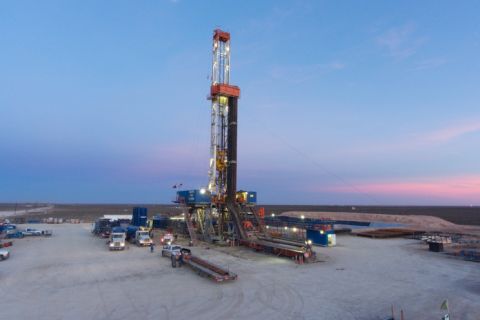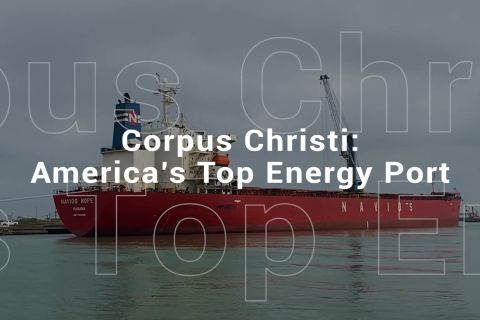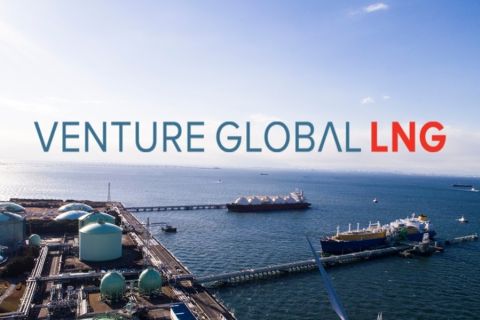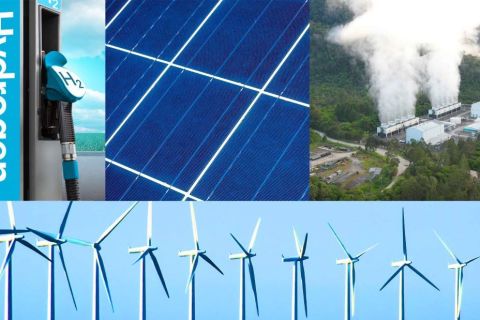Presented by:

This article first appeared in the 2022 Minerals Business Report and Buyers Directory.
Midstream considerations of minerals investing are always present and yet rarely a priority—like air: ubiquitous and thus unremarkable.
“Basin midstream takeaway capacity is an important consideration to our overall acquisition program,” said Darin A. Zanovich, president and CEO of Mesa Minerals Partners II. That is especially the case “as we continue to look at acquisitions of larger mineral and royalty portfolios in new basins, because it influences operator development pace, which ultimately underpins our valuations.”
Zanovich said at Mesa Minerals they frequently think about midstream capacity and constraints as a consideration when buying on the ground in the company’s complimentary ground game strategy in the Haynesville.
“In addition to understanding the basin-level midstream environment, we incorporate gathering, production and transportation costs [GP&T] into our underwriting, which is area- and operator-specific. For large, marketed packages, we review historical data to understand GP&T trends among operators. On the ground, we review individual leases and check stub data to estimate future deductions.”
As buyers, information about midstream development helps provide Mesa with more competitive valuations.
“We always seek to get as much detail as possible before making an offer,” Zanovich said. “Often, that is more of a pull because mineral owners may not have information on midstream developments, and producers are reluctant to share information unless they are also a mineral buyer themselves.”
Mesa does not make mineral acquisitions or execute oil and gas leases that are contingent on midstream capabilities.
“Before we acquire a mineral interest or execute an oil and gas lease with an operator,” Zanovich continued, “we have a good understanding of their overall midstream takeaway in the area as well as their historical GP&T costs in that area. All of that is part of our underwriting process, which also includes timing of future development, spacing, type curves and conversion timing from reserve categories.”
That extensive due diligence is important because any complication that affects production at the wellhead will ultimately flow through in the royalty payments.
“That being said,” Zanovich added, “we extensively review our leases to make sure operators are taking appropriate deductions and our royalty payments are not being burdened by any unnecessary costs.”
It has been observed that private equity (PE) has been reducing its presence in minerals, but Zanovich has not seen it.
“There have been some major new commitments to teams across multiple basins in the U.S. over the last 12 months,” he said. “We continue to see minerals as an integral part of most large PE shops' portfolios. As a mineral owner, we would typically benefit from operators who work with sister company PE midstream companies on basin takeaway.”
“We continue to see minerals as an integral part of most large PE shops’ portfolios.”
—DARIN A. ZANOVICH, Mesa Minerals Partners II
Roadblocks
Capital management firm Stephens Inc. executed its first minerals transaction in 2011, said Brad Nelson, managing director of the investment banking group.
“Now about a third of our deal flow is currently in the minerals and royalties space,” he said. “Usually the midstream aspect of a transaction comes in tandem with the producer and slightly ahead of the minerals investor.”
There are more than 100 companies of scale that are focused on investing in minerals and royalties, according to Nelson. Some have been around for a long time.
“There are new minerals platforms (under 10 years old) with relatively new committed capital,” he said. “As they make their investment decisions, they are always looking for roadblocks to development because minerals are a nonoperating interest, so they are alert to anything that would derail development.”
Those roadblocks could be as broad as commodity prices or trends, and they can also include the producer’s financial health and track record of success.
“Minerals investors’ first questions are when and how development will take place,” Nelson said. “They want to know the number of wells that will be drilled and who will be financing that development.”
In addition, the hydrocarbons need to get to market to make any money for those involved. In a small irony, that mandate means that minerals investors see the midstream only in terms of what might not happen. The assumption is that there will be gathering and transportation infrastructure, so minerals investors are more concerned with downside risk in terms of midstream development.
“Many minerals investors are active in the big producing basins, or at least known markets, so there is not a whole lot of midstream development still to be done,” Nelson said. “They are looking for a lot of PDPs [proved developed producing reserves] up front. Others are willing to take a bit more risk, looking for DUCs and permits. There are only about 10% to 20% of minerals investors’ capital deployed buying away from the fairway because they like the rock and the operators involved.”

Important considerations
The producer is the one connected, literally and transactionally, with the midstream operator.
“Minerals owners and buyers are mostly concerned with the quality of the operator and the acreage, and their belief about where and when the producers will drill,” explained Steve Hendrickson, president of Ralph E. Davis Associates, a reservoir engineering and management company also active in A&D and minerals transactions.
“As a mineral owner/investor,” he added, “I don’t control or even influence the midstream decisions, but I would certainly have my eyes open about whether the producer is managing those decisions well.”
There is another, later midstream consideration for minerals owners to bear in mind, Hendrickson noted: not just capacity for initial development but also for growth.
“In active plays, there’s a risk of a ‘basis blowout,’ where future production growth outpaces the construction of new transportation and processing,” he said. “Even if adequate midstream is in place today, one should consider whether midstream capacity will be there for us when production grows.”
“Minerals investors are a savvy bunch,” Hendrickson continued. “The competition for minerals assets can be strong, which can drive up asset values. With more money at stake and less room for error, it becomes more important to consider the midstream aspects of their investments.”
The same is true for a public offering.
“When a minerals company plans an IPO, they know the market is going to be looking at their diversification across a number of metrics: plays, acreage and operators, for instance. Diversification of transportation and processing alternatives is another important consideration.”
“Minerals investors are a savvy bunch. The competition for minerals assets can be strong, which can drive up asset values.”
—STEVE HENDRICKSON, Ralph E. Davis Associates
Upswing in demand
New committed capital coming in is not the only change in minerals investing, noted Nelson at Stephens.
“As recently as 10 years ago, people would somewhat blanket an area,” he added. “Now they are much more targeted. It used to be you would like this or that county. Now investors are more specific. Part of that is having midstream in place. Most of our deal flow is in the bigger and active basins where there is usually plenty of midstream capacity.”
To a large degree, the risk tolerance of minerals investors varies with their time horizon. For the majority, midstream in operation, or at least planned, precedes investment. That said, there is a risk-tolerant corner of the sector for those comfortable betting on the come. Just as some land speculators would buy in anticipation of the route of the railroad, there are some geographic areas where midstream capacity is constrained. It would seem logical that plans for new pipe and processing would open the gates for more production revenue.
“The typical time horizon of investors is usually about four to eight years,” Nelson said. “While some may have a longer view, it is also true that midstream development can take longer than producers or operators anticipate. There are some minerals companies that would deploy some of their capital for that longer, strategic bet, but not as a majority of their investment thesis.”
“We are now starting to see who is in and who is out. There is clearly an upswing in demand for all commodities, and the trends are moving in a better direction.”
—BRAD NELSON, Stephens Inc.
More broadly, Nelson cautioned against drawing and sweeping conclusions based on the last few years.
“Calendar 2020 was obviously horrible for everyone, and not just COVID-19,” he said. “There was Russia/OPEC posturing and an election looming over the entire year. In my 25 years in the business, I have never seen so many headwinds. There has also been significant capital leaving oil and gas because of environmental, social and governance concerns.”
Just this year, Nelson continued, “We are now starting to see who is in and who is out. There is clearly an upswing in demand for all commodities, and the trends are moving in a better direction. We like the macro environment at the moment.”
In that context, Nelson said they “try to keep things simple.”
“Most minerals investors are interested in major basins where midstream is not a concern, he added. “Minerals investors are always looking for roadblocks, and one of those can be midstream. If that is the case, they will tend to go in another direction."
Recommended Reading
APA’s Permian to Pick up Production Slack Amid Overseas Headaches
2024-02-26 - With various overseas headaches, Houston-based APA Corp. aims to boost its Permian Basin volumes and integrate its Callon Petroleum acquisition when it closes in the second quarter.
Global Energy Watch: Corpus Christi Earns Designation as America's Top Energy Port
2024-02-06 - The Port of Corpus Christi began operations in 1926. Strategically located near major Texas oil and gas production, the port is now the U.S.’ largest energy export gateway, with the Permian Basin in particular a key beneficiary.
US Customs Rules New Fortress’ FLNG Facility Does Not Violate Jones Act
2024-01-30 - New Fortress Energy’s FLNG facility offshore Mexico can now sell and deliver LNG to U.S. locations.
Venture Global Seeks FERC Actions on LNG Projects with Sense of Urgency
2024-02-21 - Venture Global files requests with the Federal Energy Regulatory Commission for Calcasieu Pass 1 and 2 before a potential vacancy on the commission brings approvals to a standstill.
Energy Transition in Motion (Week of March 22, 2024)
2024-03-22 - Here is a look at some of this week’s renewable energy news, including a new modeling tool for superhot rock.






